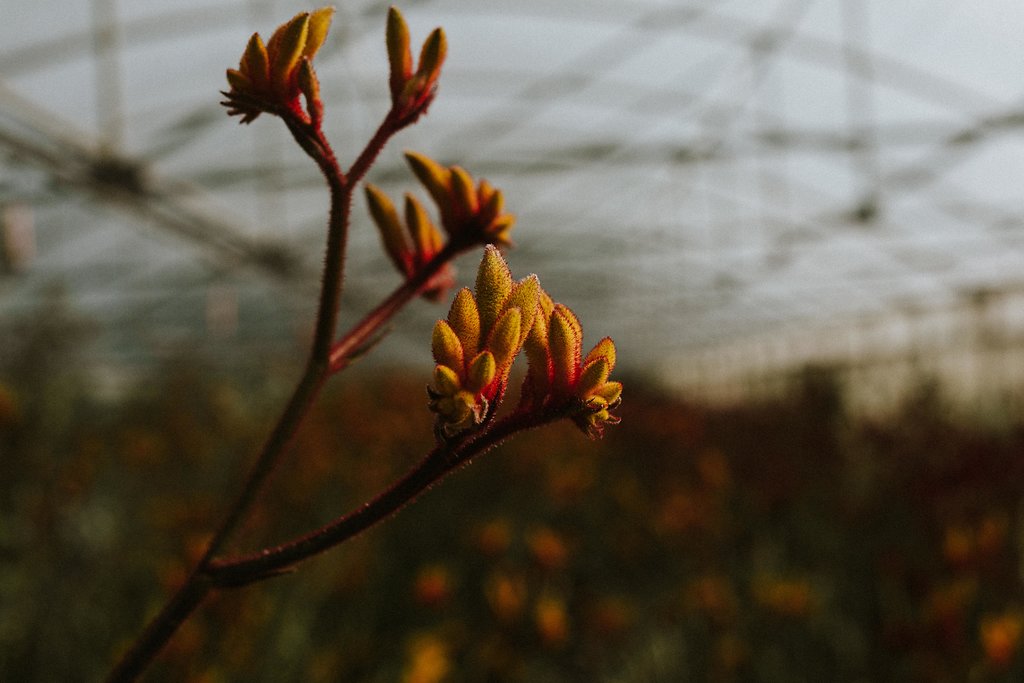SUSTAINABILITY IN FLORISTRY - WHY WE CARE AND PRACTICES WE CAN IMPLEMENT TO HELP OUR PLANET
Photo: Film and Foliage from one of growers, East Coast Wildflowers
Flowers are the best, right? They’re beautiful, they’re natural, not to mention they are often how we tell our loved ones we’re proud of them; we’re happy for them; we’re grieving with them and we love them. We use flowers to communicate in so many ways.
I find myself so in awe of what nature can produce. She blesses us with beautiful flora and feeds our souls so that we can, in turn, bless her back. But in this day and age, the real question is how can we give back to nature when we have taken so much from her? How can we engage in a sustainable and ethical lifestyle and what can we do to support businesses that are driven by this ideal?
Photo: Film and Foliage
Floristry is part of an agricultural supply chain and there are always ethical considerations to be made. We need to ensure that our business is not only aware of potential ethical and sustainability issues, but also putting practical solutions into action. Sustainability must be our priority in everything we do, otherwise what’s the point? What’s the point in making a profit if we won’t have an Earth on which to redeem that profit? All we can do is the absolute best we can. If we aren't constantly making better choices, we are standing in the way of our children's future.
So I thought I would share all the practices that we are doing as a business to help minimise our carbon footprint and become as ethical and environmentally conscious as possible. Government and big business have a huge role to play in the coming years, however, as a consumer, when we stand together, strength in numbers is a far greater power than any.
We'd love to hear any tips or tricks you may have so please message us on Facebook or Instagram or email us at hello@theposypost.com.au
WASTE
We always do our best to minimise waste, especially waste that goes to landfill. We're definitely not perfect but are always very conscious of this and constantly working to improve our practices in every area.
Apart from the sticker, everything in our final product for posies can be either composted or recycled. The flowers and the twine we use are compostable. We use recyclable paper to wrap our flowers and if posies are left in a cup on your doorstep, that too can be recycled. We have been working with our supplier to create a recyclable sticker and it should be arriving at the end of April (big win!)
We never use plastic or floral foam in our daily arrangements. We're also trying to source a compostable ribbon. Unfortunately, at the moment ribbon still goes into landfill. (would love some suggestions on ribbon alternatives!)
All of our waste is sorted and disposed of in the correct manner. We separate our compostables, recyclables and soft plastics and make sure to dispose of them accordingly.
At the end of the week, we usually have 1-2 garbage bags of waste that goes into landfill. Not too bad for a medium sized business!
One of the biggest issues for us is the yucky soft plastic sleeves that the majority of our growers still use to package their flowers in when we pick them up from the flower markets. While we do our best to recycle these, the hardest question is, how do we, as an industry encourage all stakeholders within our supply chain to use more environmentally friendly packaging.
No Floral foam
Many florists use what is called “floral foam”. You have likely seen it before. It’s that foamy part at the base of a bunch of flowers, there to keep flowers standing and to improve the longevity of the flowers. Foam takes years to break down with some experts suggesting that it may not break down at all in landfill! Not to mention, it contains carcinogens and is not great for your health. We always choose flower frogs and chicken wire instead of foam where possible. If you’re interested in learning more about the affects of floral foam follow No Floral Foam on Instagram.
SUPPORTING LOCAL
We're making a big effort this year to buy the majority of our flowers from local suppliers and only using flowers that are in season. This can be particularly difficult since we require so many different flower types en masse to fulfil our orders.
We're lucky enough to have one of the best native wildflower growers right on our doorstep at Mangrove mountain and so many other local growers close by.
A few FLOWER tips for you at home
Upcycle and Reuse
Water your garden with old bucket water
Dry Your Flowers
Here are our flower drying tips:
Some other ways we minimise waste is dry leftover flowers to use for other design work. We love drying flowers so much. The result is beautiful and our workshop is full of dried flowers waiting to be styled!
BEST FLOWERS FOR DRYING
Banksia, Stirlingia, Misty, Protea, Statice, Paper Daisys just to name a few
HANGING UPSIDE DOWN METHOD
Gather flowers in a bunch and secure with twine, hang bouquet upside down, in a well ventilated area out of direct sunlight. There are lots of dried-flower decoration inspiration on Pinterest.
LAZY METHOD (LEAVING THE FLOWERS IN A VASE)
After you have enjoyed your bouquet the water in the vase has evaporated the flowers will eventually dry out. They will mostly remain upright except those with delicate stems. Flowers with strong/tough stems are best for this method because they won’t droop.
PRESSED METHOD
Use a heavy book (eg. Encyclopedia), line all the pages you are going to use with parchment or wax paper., arrange the flowers face-down, close the book and leave untouched for 7 to 10 days.
Again, we aren’t perfect but it is so important that we do our best to give back to the environment and think about our planet before we make our next move.
All our love.
TPP x






